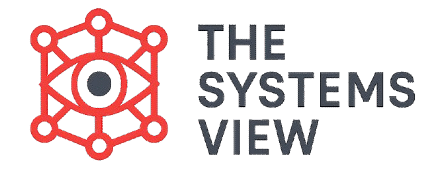Donella Meadows (1941–2001) was arguably the most famous and influential student of System Dynamics founder Jay W. Forrester. While Forrester developed the technical tools, Meadows became the leading voice who applied these powerful models to the most urgent global problems: sustainability, resources, and environmental limits. Her work made systems thinking accessible to a global audience and shifted the focus of the methodology from corporate management to planetary stewardship.
Meadows emphasized that to solve complex problems, we must find the leverage points within a system—those few places where a small, focused effort can produce large, lasting changes.
The Limits to Growth: A Global Wake-Up Call
Meadows’s most famous and globally influential work was the 1972 study, The Limits to Growth. She co-authored this report for the Club of Rome with her husband, Dennis Meadows, and others, using the System Dynamics methodology developed by Forrester.
The World3 Model
The study utilized the World3 Model, a massive System Dynamics simulation designed to examine five interacting factors that drive human impact on the planet:
- Population
- Industrial Production
- Food Production
- Resource Consumption
- Pollution
The model demonstrated that if the world continued its path of exponential growth in population and industry, the planet would eventually exceed its carrying capacity, leading to a sudden and rapid decline in population and industrial capacity, likely sometime in the 21st century.
The Key Insight
The controversial report’s core message was a powerful lesson in systems thinking: finite systems cannot sustain infinite growth. The world is a finite system, and its capacity is limited by the interconnected stocks and flows of resources and pollution absorption. The study forced policy-makers to recognize the severe limits imposed by the Earth’s structure.
The Theory of Leverage Points
Meadows spent much of her career teaching people not just how to model systems, but how to change them effectively. Her work on leverage points is one of her greatest contributions to applied systems thinking.
What are Leverage Points?
A leverage point is a place in a complex system where a small shift in one thing can lead to large changes in everything else. These are the places where intervention works best.
- Counter-Intuitive Solutions: Meadows reinforced Forrester’s finding that the most obvious solution (the place where the problem is most visible) is almost never the actual leverage point. The most effective points are often hidden or far removed from the problem’s symptoms.
- The Power of Structure: Her famous 12 points of intervention identified the highest leverage points not as simple monetary fixes, but as changes to the system’s structure, such as rules, goals, and mindset.
The Highest Leverage Points
Meadows defined the three highest leverage points as follows:
- The Goal of the System: Changing what the system is trying to achieve (e.g., shifting a company’s goal from maximizing profit to maximizing long-term well-being).
- The Rules of the System: Changing the incentives, punishments, or constraints (e.g., changing the tax code to penalize pollution).
- The Mindset or Paradigm: Changing the deeply held assumptions and values that underlie the entire system (e.g., shifting the cultural belief that “bigger is always better”).
Donella Meadows became the key public voice of System Dynamics, applying its models to global sustainability. Her work on ‘Leverage Points’ taught us that the most effective interventions in complex systems focus on changing the goals, rules, and mindsets, not just the technical flows.
Systemic Thinking for a Better World
Meadows’s writing, especially her popular column The Global Citizen, made complex systemic principles accessible. She emphasized that systems thinking is ultimately a tool for solving human problems and creating more sustainable policies.
Dancing with Systems
In her essay, Dancing with Systems, Meadows provided practical advice for those seeking to change complex systems. She urged people to:
- Be Patient: Real structural change takes time, often longer than a typical political or business cycle.
- Be Humble: Recognize that you can never fully understand a system; you can only model and test your assumptions.
- Listen to the System: Instead of forcing a solution, pay attention to the feedback the system gives you and let it guide your policy changes.
Conclusion
Donella Meadows transformed System Dynamics from a niche modeling tool into a global framework for sustainability and policy reform. Through the influential Limits to Growth report, she exposed the systemic dangers of infinite growth in a finite world. Her enduring legacy lies in her ability to communicate the power of the holistic view and provide clear guidance on finding the crucial leverage points required to effectively and permanently change complex systems.

